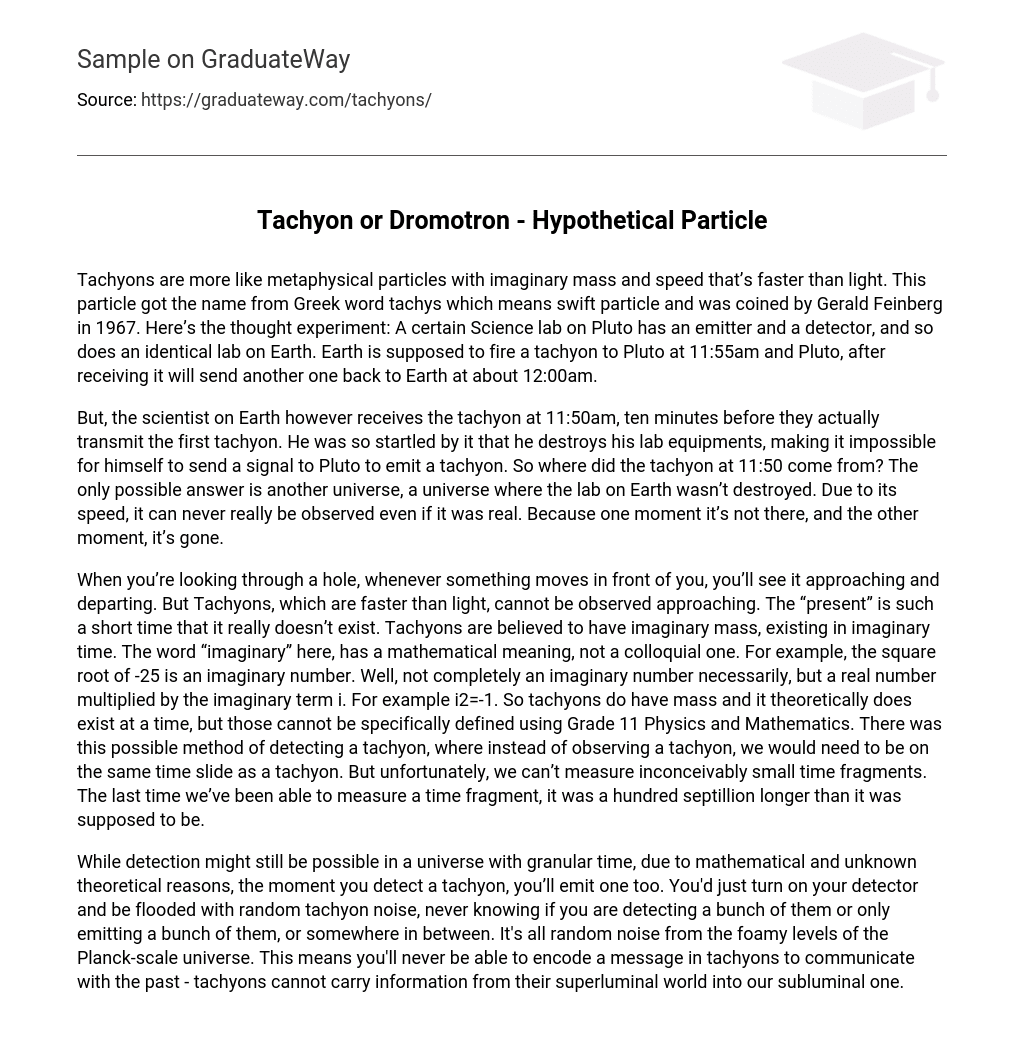The term “tachys,” meaning swift particle, was coined by Gerald Feinberg in 1967 to describe tachyons. Tachyons are metaphysical particles with imaginary mass that can travel faster than light. To better understand this concept, let’s consider a thought experiment involving two labs: one on Earth and the other on Pluto. Each lab has emitters and detectors. At 11:55am, it is anticipated that Earth will transmit a tachyon to Pluto. Upon reception, Pluto will reciprocate at around 12:00am by sending another tachyon back to Earth.
However, the scientist on Earth receives a tachyon at 11:50am, ten minutes before the actual transmission of the first tachyon. The sudden arrival startles him so much that he destroys his laboratory equipment, preventing him from sending a signal to Pluto to emit another tachyon. This raises the question of where exactly the 11:50 tachyon came from. The only possible explanation is another universe where the laboratory on Earth remains intact. Despite its speed, the tachyon cannot be observed even if it exists because it appears and disappears in an instant.
When you peer through a hole, any movement in front of you can be seen as it comes closer and then moves away. However, Tachyons, which move faster than light, cannot be observed approaching. The concept of the “present” is so brief that it essentially has no existence. Tachyons are thought to possess imaginary mass and exist in imaginary time. Here, the term “imaginary” carries a mathematical meaning rather than its colloquial definition. To illustrate, the square root of -25 is an imaginary number. In actuality, it is a real number multiplied by the imaginary term i, for example i2 = -1. Therefore, tachyons possess mass and theoretically exist at some point in time, but these concepts cannot be precisely defined using Grade 11 Physics and Mathematics. One potential approach for detecting a tachyon involves being in the same time frame as the tachyon rather than directly observing it. Unfortunately, we are unable to measure time fragments that are inconceivably minute. The most recent attempt at measuring such a fragment was a hundred septillion times longer than intended.
Detection in a universe with granular time may still be feasible, albeit for reasons both mathematical and theoretical, the act of detecting a tachyon would also result in the emission of one. By simply activating your detector, you would experience an inundation of arbitrary tachyon interference, leaving you uncertain whether you are detecting a cluster of tachyons, emitting them, or somewhere in between. This noise derives entirely from the foamy depths of the Planck-scale universe. Consequently, it becomes impossible to encode a message within tachyons as a means to communicate with the past, as these superluminal entities lack the ability to convey information from their realm to our subluminal one.





